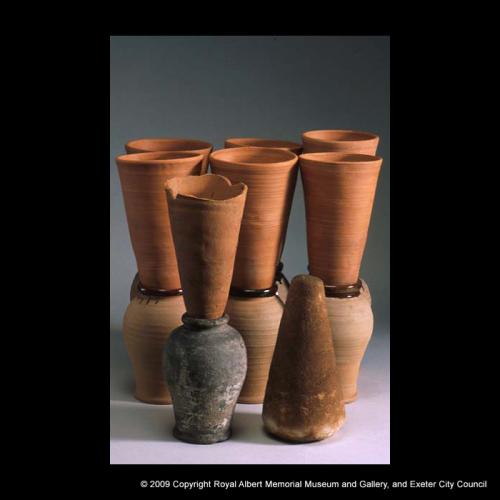Pottery used in sugar refining
Back to Time Period
In the years between 1680 and 1720 several sugar bakers operated in Exeter and Topsham. The waste of one of their sugar houses was found in Goldsmith Street in 1971. It consisted of many thousands of sherds used in the later stages of sugar refining.
Sugar arrived in England mainly in the form of muscavadoes (brown sugar) and was refined first by boiling; it was then poured into conical earthenware sugar moulds which sat upon globular syrup jars. The sugar crystallised in the sugar moulds and was then whitened by repeated pouring of liquids through the sugar.
The Exeter finds include thousands of sherds of sugar mould, which seem to have been imported from Portugal, alongside many fragments of the syrup pots. Fragments of a third form of vessel with tripod feet were also found.
The image shows one of the fragmentary sugar moulds from the excavation on an excavated syrup pot from a different site, together with modern reconstructions of their form when complete and a modern sugar loaf in the museum collection of the type which would have been made in a cone.
Acknowledgments: RAM Museum Exeter Archaeology



















